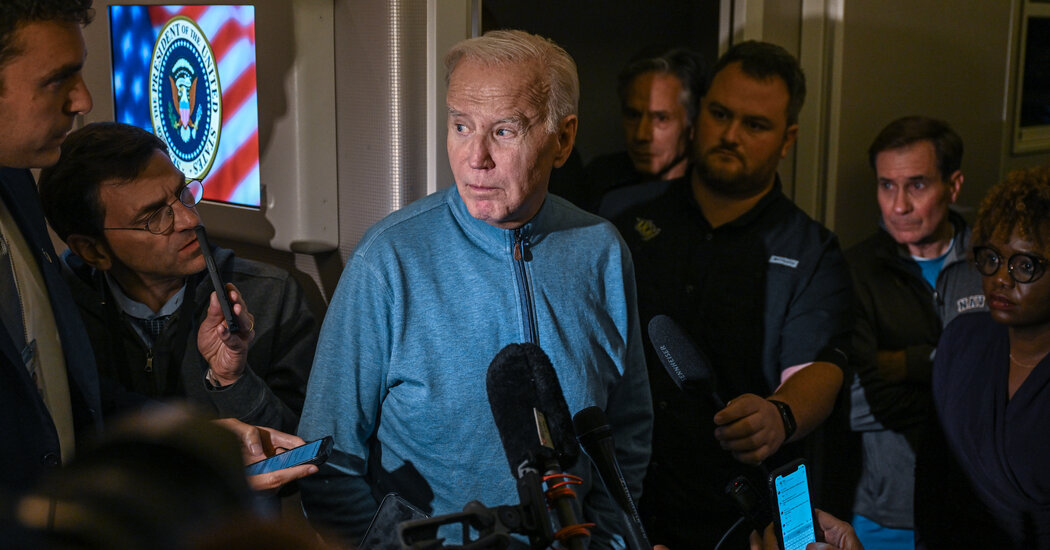The Decades-Long Fight for a Suicide Barrier on the Golden Gate Bridge
The Golden Gate Bridge has been one of the most photogenic structures in the world ever since it was built. The span, which connects San Francisco and Marin County, attracts tourists from all over the world who are delighted by its unusual orange-red color and the fog that always seems to be passing through its cables.
The bridge has also been a place of repeated tragedy. About 2,000 people are known to have jumped to their deaths from the bridge since it was completed in 1937, and since not all jumps are witnessed and not all bodies are found, the true tally is very likely to be higher.
My colleague John Branch wrote in The New York Times recently about the effort to install three and a half miles of stainless steel netting under the bridge as a “suicide deterrent system.” The system, which workers are nearly finished installing, has cost $217 million and took longer to build than the bridge itself did, John reports.
You can read his full article here.
I spoke to John about his reporting and the decades-long fight by families of people who have jumped to get a barrier installed. Here’s our conversation, lightly edited.
The suicides on the Golden Gate are happening on one of the most iconic structures in the world, in one of the most well-known cities on the planet, but they remain pretty much under the radar. Why do you think that is?
A lot of reasons. One is that suicides on the bridge happen one at a time, and people rarely stop and add up the toll, in terms of numbers and heartache. For several decades, the suicides did warrant brief mentions in local newspapers, and there was a sort of countdown as the toll approached 500 (in 1973) and 1,000 (in 1995).
The crass attention around that last countdown, especially, got officials questioning whether the coverage was causing more copycat cases of suicide. Jumps have received less attention since. But from 2011 to 2020, the number of jumpers grew, to more than 30 per year, on average.
Families have been pushing for years for officials to do something. Why did it take so long to act?
In general, it’s a combination of two factors: the love for the bridge’s design, even of something as seemingly benign as the height of handrails; and a collective misperception, if not downright dismissiveness, about suicide.
Periodic pleas for more to be done — mainly, a higher railing — were routinely ignored, mostly because of aesthetics, cost and the questionable effectiveness of any proposed solution. That last one is related to our misunderstanding of suicide, which many had long considered to be someone else’s problem and an individual right.
That attitude shifted among decision makers in the early 2000s as family members coalesced to forcefully advocate for something more to be done. They brought humanity to the cause, and could not be ignored.
What was the most surprising thing you learned?
Most surprising is how many people I’ve found who have been touched by a Golden Gate Bridge suicide; if you don’t know someone directly, you know someone who knows someone. I told a good friend that I was working on this story, and he told me something he hadn’t before: He was across the bridge when the car in front of him stopped suddenly, and a man got out and leaped over the rail.
I was surprised at the unknown toll for people like that. We think of family members and friends left behind. But since these suicides have happened in a public place, usually during daylight, there are countless people who have witnessed a jump — driving across the bridge, walking on the sidewalk, sailing in the water below.
Most bridge employees, like painters and ironworkers, have witnessed them. I think of the officers and passers-by who try to stop people, and the Coast Guard members who have pulled bodies from the water. One four-second jump can haunt many, many lifetimes.
If you are having thoughts of suicide, call or text 988 to reach the 988 Suicide and Crisis Lifeline or go to SpeakingOfSuicide.com/resources for a list of additional resources.
And before you go, some good news
Wine aficionados, get your corkscrews ready.
Vineyards across California Wine Country are nearing the end of their harvest season and, thanks to an optimal growing season, winemakers think this year’s vintage could be one of the best in decades.
Wine grapes thrive in temperate conditions with plenty of rain. Cool and damp winters are known to be the best for the fruit, allowing the vines to flower at a natural rate and the grapes to grow slowly and to develop a deep and complex flavor profile.
Such growing conditions have been virtually nonexistent in recent years, with adverse weather events driven by climate change — a punishing heat wave last year, drought and smoke in previous years — affecting the crop and sometimes forcing growers to harvest early.
This year, heavy rain at the start of the season and moderate weather throughout have made conditions just right. And the proof is in the pudding, winemakers say, noting high yield and rich purple grapes.
“It’s probably the best start that we’ve ever had that I can remember in 50 years,” Andy Beckstoffer, one of the biggest growers in the region, told The San Francisco Chronicle.
Get pouring!


